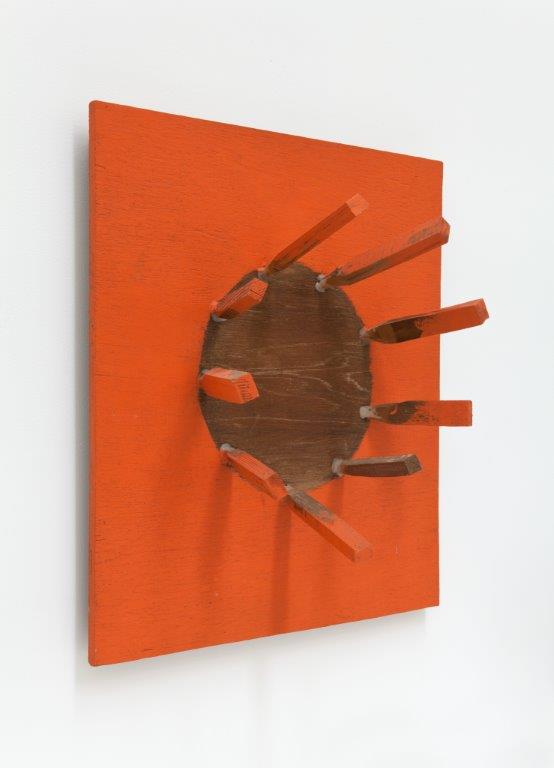One of the leading figures of the Mono-ha (School of Things) group active in Japan in the late 1960s and early 1970s, Kishio Suga has for many years made compelling, space-activating sculptural work. Like other artists connected with the group, Suga’s work often features a combination of natural and manmade materials in a barely-altered state where the emphasis is on their material properties and physical presence. In the assemblage Center Of Edge 921, Suga uses orange paint and wooden rods to define a circle that shifts from 2-D painterly space out into 3-D sculptural space. As the circle moves from the background to the rods, it activates and defines the space between the rods. Suga has had numerous solo exhibitions in Japan, including at the Iwate Museum of Art, Morioka; the Yokohama Museum of Art; the Chiba City Museum of Art; the Hiroshima City Museum of Contemporary Art; and the Museum of Contemporary Art, Tokyo. His work has also been included in landmark surveys, such as Tokyo 1955–1970, Museum of Modern Art, New York; Reconsidering Mono-ha, National Museum of Art, Osaka; Japanese Art after 1945: Scream Against the Sky, held at Yokohama Museum of Art, Guggenheim Museum Soho, and San Francisco Museum of Modern Art; Japon des Avant Gardes 1910–1970, Centre Georges Pompidou, Paris; and the 8e Biennale de Paris, held at the Musée d’Art Paris Moderne de la Ville de Paris and Musée National d’Art Moderne, Paris.

Kishio Suga
CENTER OF EDGE 921
1992
wood and acrylic
23 5/8 x 21 5/8 x 8 5/8 inches